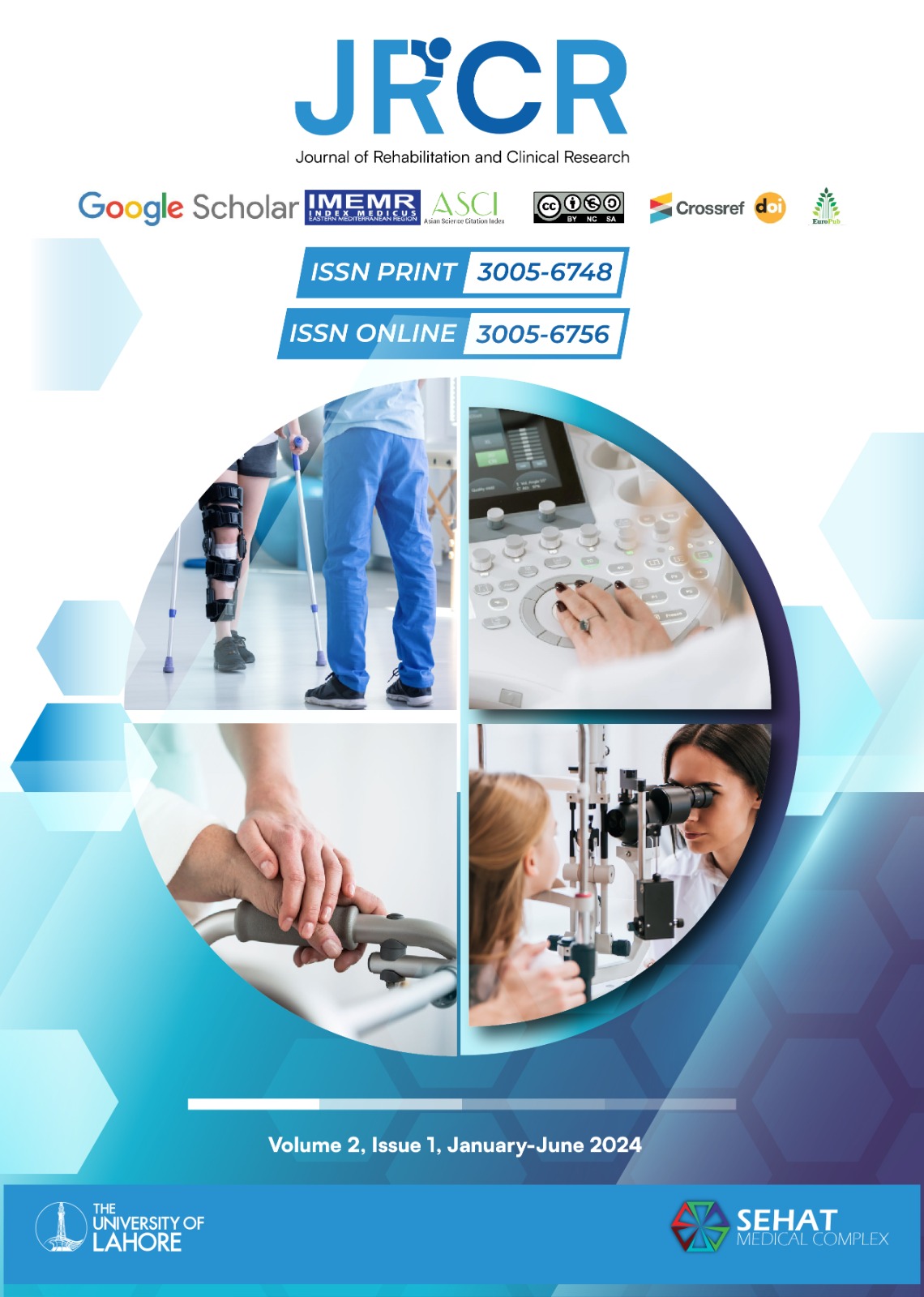Prevalence of Temporomandibular Disorders and its Association with Stress among Students of The University of Lahore, Lahore, Pakistan
DOI:
https://doi.org/10.61776/jrcr.v2i1.2901Keywords:
Fonseca questionnaire, Prevalence, Perceived stress scale, Stress Temporomandibular disordersAbstract
The objective of this study was to check the prevalence of Temporomandibular disorder (TMD) among the students of University of Lahore, Lahore, Pakistan, its association with stress, and to compare the prevalence among students of different departments This study included 198 students with age ranging from 18 to 25 years. The questionnaire comprised of 2 sections, the first part covered the demographic data (age, gender, semester and department) and TMD signs and symptoms using Fonseca’s questionnaire whereas the second part comprised of standardized Perceived stress scale (PSS). After taking informed consent the subjects were given the questionnaires. Fonseca’s questionnaire is a standardized scale to check the severity of TMD. The results of this study showed that most of the participants included in this study were from 21-24 of age. Among subjects, 55% were females and 45% were males with a greater number of students in their 4th or final year of degree. The Fonseca questionnaire used in this study showed that the 65-80% of the sample revealed no symptoms of TMD, while 34.2% revealed mild symptoms of TMD. Results from perceived stress scale showed a significant association between stress and TMD. Temporomandibular disorders with mild symptoms were prevalent among University of Lahore student. It was also found that stress plays an important role in the development of TMD. TMD was more prevalent among health sciences students as compared to others.
Downloads
Published
How to Cite
Issue
Section
License
Copyright (c) 2024 Noor ul Huda Moughal, Fareeha Amjad, Arooj Fatima, Ashfaq Ahmad

This work is licensed under a Creative Commons Attribution-NonCommercial-NoDerivatives 4.0 International License.
Authors retain copyright of their work and grant Journal of Rehabilitation and Clinical Research the right to publish it under a Creative Commons Attribution-NonCommercial-NoDerivatives 4.0 International (CC BY-NC-ND 4.0). This license permits sharing, copy and redistribute the material in any medium or format, provided proper attribution is given to the authors.
Authors may distribute the journal’s published version (e.g., in repositories, books, or other platforms) non-exclusively, with acknowledgment of its original publication here.
Authors are encouraged to share their work publicly (e.g., on personal websites or institutional repositories) to foster scholarly exchange.






